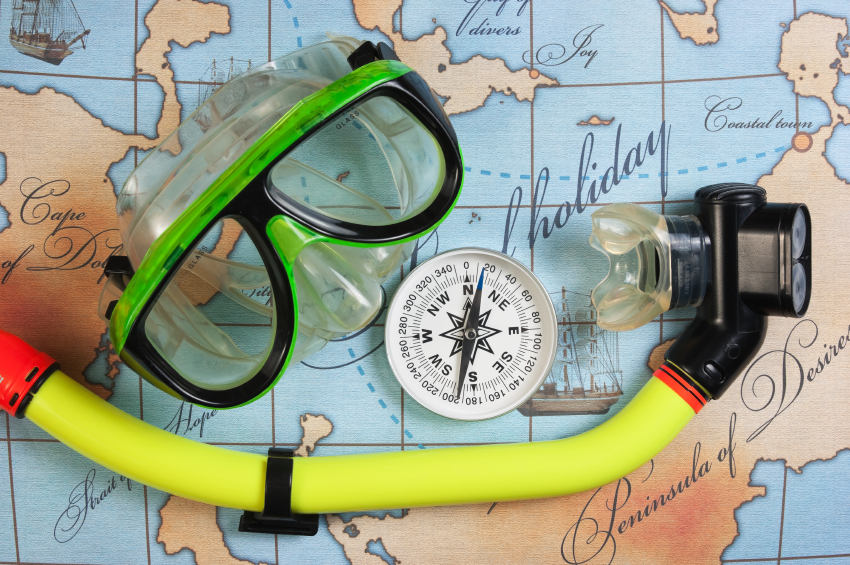Maybe you were on a shore dive, fairly confident that you were returning to your entry point after the dive, only to find you had a long swim ahead of you because you miscalculated you route. If you have never faced either situation, you are a rare diver indeed.

Navigation is second only to buoyancy control on my list of important skills to master in order to be a competent independent diver that does not need a guide on every dive. (there are of course more skills on the list) And for those of us that regularly dive in waters with limited visibility ( under 20 feet ) navigation skills are critical. Basic scuba certification courses teach very little about compass use and navigation. Advanced diver courses present a lot more training and practice, as does a navigation specialty course. Both are worth while. Yet we can all improve our navigation skills, regardless of what formal training we have had. If you have basic knowledge about how to use a compass, and what the bezel is, then here are some tips and reminders for you recreational divers that will improve your navigation skills.
- Believe the compass.
- Navigation involves vectors which have both direction AND distance.
- When diving on you own in conditions that require good navigation, a slate is an essential tool. Use it to note your course. Some people who do navigation skills work regularly can maintain a good mental chart, but a slate is a must for most of us.
- Distance determination is harder to master than direction determination. All the suggested methods are useful: counting kick cycles, time, air consumption. Unfortunately, none are constant. Use the method that is most constant for you, which will vary with the conditions in which you are diving. Each of them requires lots of practice to be mastered. When possible use landmarks- they don’t move.
- However your compass is mounted, (and I’m ok with console mounts or compass only on a retractor) holding your compass level at all times is essential.
- Make use of landmarks to confirm your location.
- Always be thinking about how to make your navigation more precise.
I like to navigate from object to object when possible. Example: we went off shore at 80 degrees for 5 minutes to the big coral head (note on slate) The we went more or less 145 degrees to the main reef, taking 3 minutes, where the big elkhorn coral was (note on slate).Then we went on a course more or less 180 degrees for about 10 minutes, looking at the reef. Now I could try to navigate straight back to our point of origin (about 330 degrees for 14 minutes) OR… I can reverse my direction by going on three simple reciprocals: 00 degrees, then 315 degrees, then 275 degrees, using the landmarks and time for confirmation. The second way is easier.
If you want to be a good and accurate navigator, practice with your compass on every dive, even if you are being led by a divemaster. It’s a little work, but it’s actually nice knowing where you are and how to get home!
DivemasterDennis

